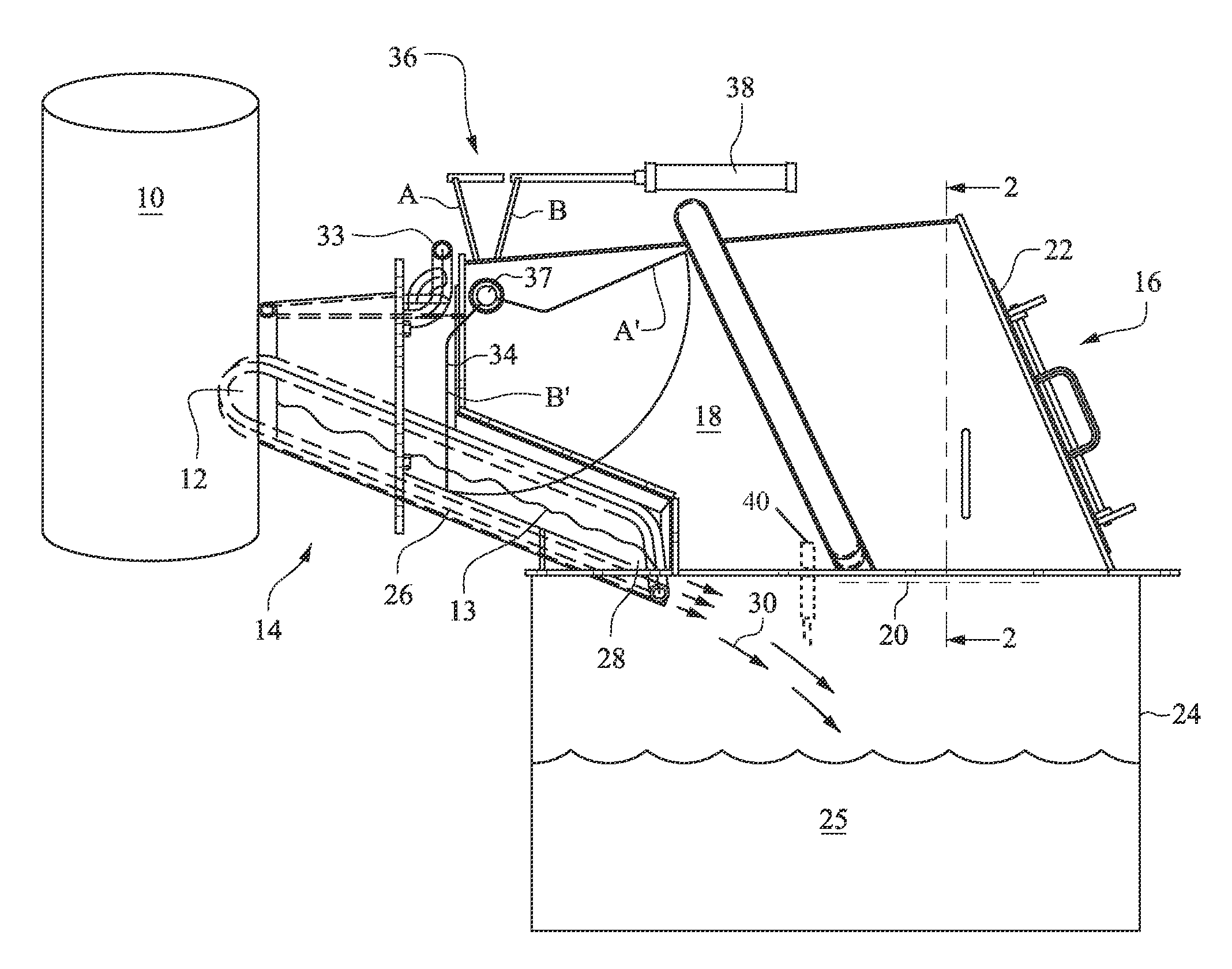Cooled smelt restrictor at cooled smelt spout for disrupting smelt flow from the boiler
a technology of restrictor and smelt, which is applied in the direction of water supply installation, process and machine control, instruments, etc., can solve the problems of abnormal or heavy smelt flow, large temperature difference between, and “banging” and explosions, etc., and achieve the effect of reducing the flow rate of smel
- Summary
- Abstract
- Description
- Claims
- Application Information
AI Technical Summary
Benefits of technology
Problems solved by technology
Method used
Image
Examples
Embodiment Construction
[0019]Referring now more particularly to the accompanying drawings in which like reference numerals indicate like parts throughout the several views.
[0020]FIGS. 1 and 2 show a lower section of an example embodiment of a recovery boiler 10 of a pulp mill. Smelt flows from the bottom of the boiler 10 through an opening 12 and into a smelt spout 14. The portion of the smelt spout 14 extending outside the wall of the boiler is surrounded by a conventional closed protecting hood 16 comprising an upper hood portion 18 and a lower hood portion 20. The upper hood portion 18 includes a cover 22. The hood 16 contains the splash of liquid and smelt as they flow through the spout 14 and contains exhaust gases so that the gases do not discharge directly to the environment. The lower hood portion 20 may be connected to a conventional dissolving tank 24 disposed under the protecting hood 16. In the tank, the smelt is dissolved into liquid to produce, e.g., green liquor.
[0021]Hot, liquid smelt 13 f...
PUM
| Property | Measurement | Unit |
|---|---|---|
| rotation | aaaaa | aaaaa |
| temperature | aaaaa | aaaaa |
| temperature | aaaaa | aaaaa |
Abstract
Description
Claims
Application Information
 Login to View More
Login to View More - R&D
- Intellectual Property
- Life Sciences
- Materials
- Tech Scout
- Unparalleled Data Quality
- Higher Quality Content
- 60% Fewer Hallucinations
Browse by: Latest US Patents, China's latest patents, Technical Efficacy Thesaurus, Application Domain, Technology Topic, Popular Technical Reports.
© 2025 PatSnap. All rights reserved.Legal|Privacy policy|Modern Slavery Act Transparency Statement|Sitemap|About US| Contact US: help@patsnap.com



